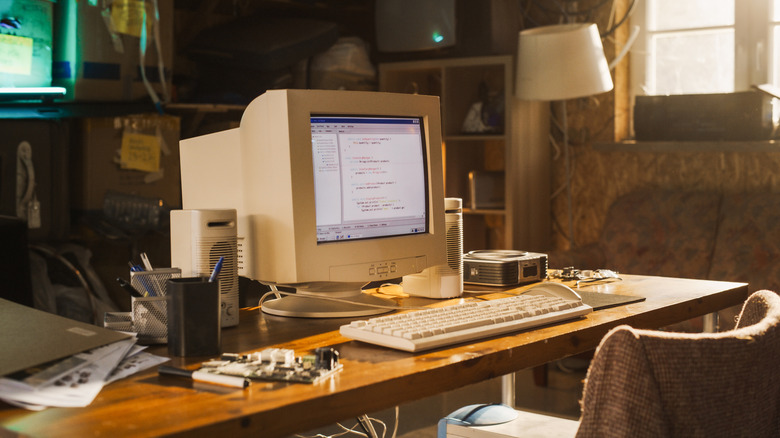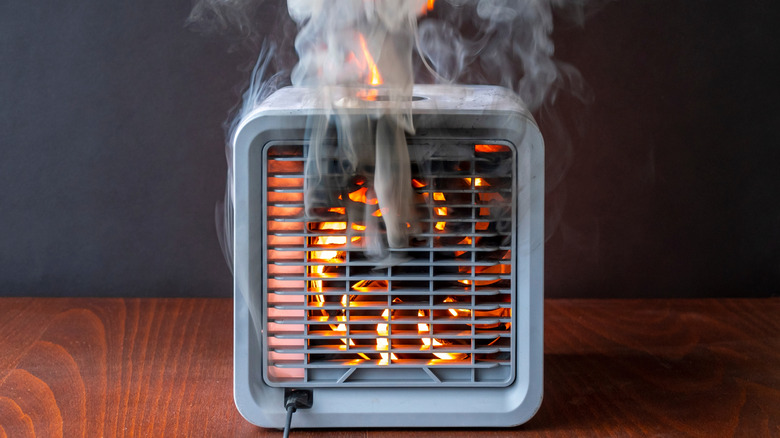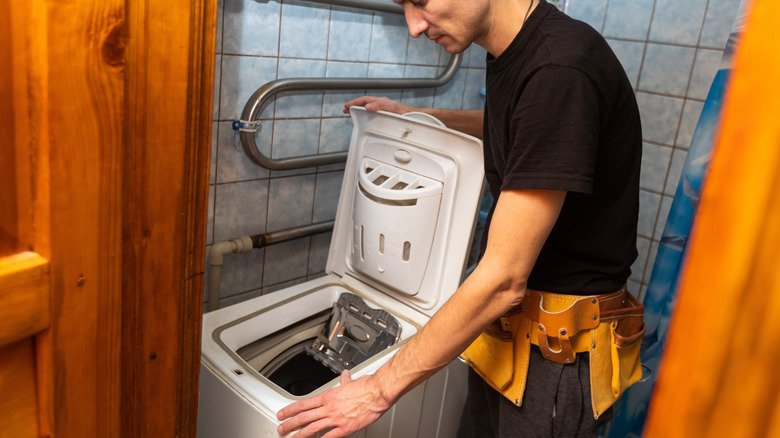Don't Overlook These Downsides To Keeping Outdated Technology In Your Home
Many of us have old computers, phones, or other pieces of technology that have faithfully served us for many years. Maybe it's an ancient microwave or toaster oven that is showing its age — but hey, it still heats up the leftovers. There's nothing wrong with sticking with a tried-and-true device or appliance if it still does its job, right?
It's tempting to continue using outdated technology if it's still functional; all the better to avoid shelling out money for a new device. But while keeping old tech around may seem harmless, doing so can lead to problems that go far beyond a sluggish gadget or an ugly appliance. The risks posed by outdated technology can be serious, including security vulnerabilities, fire hazards, and even hidden costs that can snowball into issues far more stressful than upgrading to a newer model. While you might feel attached to them, view them as cost-saving measures, or simply want to avoid the hassle of replacing them, your outdated pieces of tech can bring a lot of headaches.
Outdated tech might not keep your personal info secure
Some older routers, computers, and smartphones might still be functional, but the problems begin when they stop receiving security updates from manufacturers. Without these updates, your device is an easy target for hackers looking to exploit outdated software. Even older smart home devices like security cameras and thermostats can create security loopholes. Smart technology integrations meant to modernize your home can actually make it more vulnerable once their technology is no longer current.
If you're using an old PC that is connected to the internet, it's easier for hackers to gain access to your home network and potentially access personal data, including financial information. The Federal Bureau of Investigation's Internet Crime Complaint Center reported that cybercrime led to nearly $11 billion in losses in 2022 alone, and using outdated software makes hackers' jobs much easier. During that period, at least 2,385 complaints were lodged in relation to ransomware, which is malware that exploits outdated software to allow hackers to essentially hold your personal data hostage.
To protect yourself from these types of security breaches, check your devices often to ensure that they are running on the latest updates. Once the manufacturer stops providing these updates, it's best to upgrade. Yes, doing so might be expensive, but the cost pales in comparison to the potential financial and emotional toll of a cyberattack.
Outdated appliances can be a fire hazard
The risks of owning outdated technology aren't limited to online security. Older devices — microwaves, refrigerators, and space heaters, for example — may no longer meet today's safety standards. Internal components like wiring and insulation can degrade over time and increase the risk of short circuits and electrical fires. Using devices that have visible signs of wear, like frayed cords, can further increase this risk.
The National Fire Protection Association reports an annual average of 46,700 incidents related to electrical failures and malfunctions from 2015 and 2019, making it the second leading cause of electrical home fires. These incidents accounted for 13% of all home structure fires during that period, and caused an estimated $1.5 billion in property damage each year. While not all of these fires were directly caused by outdated technology, older devices with faulty wiring can often play a role in electrical failures and malfunctions.
It's easy to overlook these hidden fire hazards in your house, especially if a device appears to be totally operational — but it's a gamble you don't want to take. It's best to prioritize safety over sentimentality if you're using technology that is well past its prime, especially if there is visible wear and tear.
Outdated technology can come with hidden costs
Sticking with outdated technology might seem like a frugal choice, but older devices are often far less energy-efficient than their modern counterparts. This means they can cost significantly more to operate. That ancient fridge in your garage or the old TV you keep in the guest room might be driving up your energy bill more than you realize.
According to the United States Department of Energy, appliances account for about 15% of the average household's energy consumption. Upgrading to energy-efficient appliances can shave dollars from your monthly energy bill, and there may even be government credits you can claim when purchasing qualifying units. Using outdated appliances can also mean frequent repairs, and finding replacement parts can be both challenging and expensive.
Instead of continuously pouring money into fixing outdated devices or paying higher utility bills, it's best to just consider the long-term benefits of upgrading instead. You will not only save money in the long run, but you'll also reduce your environmental impact. That's a win for both your wallet and for Mother Earth!



